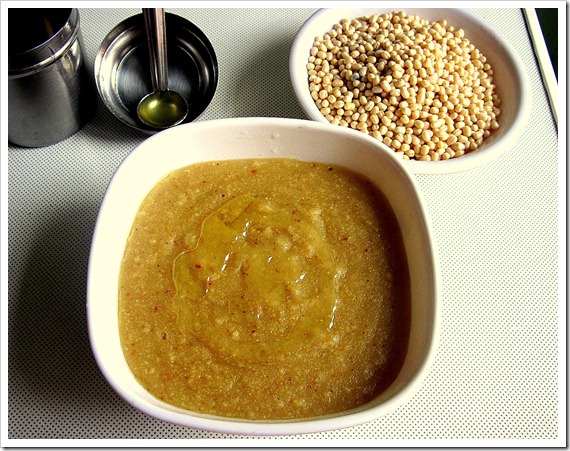I hope u all would have tasted this at the time of puberty. Generally grannys used to give this for the teen age girls to make the bones strong.When my paati gave this for me, i hesitated a lot to eat this ![]() .But now i know its importance. Nowadays at this early age, we get pains in joints and back very often.We are not able to bend continuously for sometime.We get pain in spine.This shows the weakness of our bones. So its better to have urad dal in our regular diet to avoid all these problems.Apart from eating idly/dosas and vadas , i feel this is also a good choice of including urad dal in our daily diet..
.But now i know its importance. Nowadays at this early age, we get pains in joints and back very often.We are not able to bend continuously for sometime.We get pain in spine.This shows the weakness of our bones. So its better to have urad dal in our regular diet to avoid all these problems.Apart from eating idly/dosas and vadas , i feel this is also a good choice of including urad dal in our daily diet..
Now coming to the recipe,
INGREDIENTS:
|
METHOD:
- In a kadai ,roast the urad dal till golden yellow. Powder it in a mixie adding cardamom seeds. Store it in an air tight container.
- Now take 4 tbsp of urad dal powder in a bowl and mix 2 cups of water.
- Cook the urad dal for 7-8 mins. It thickens . Stir well for sometime and make sure there are no lumps formed.
- Now add the powdered jaggery and mix well . Keep the fire in low flame. Allow it to boil till the raw smell of jaggery emanates.
- Add the gingely oil and stir well.U'll get a glossy , sliding non sticky kali is ready to njoy ..
Delicious , healthy uluthankali is ready to eat !!
NOTE :
- If u use palm jaggery instead of jaggery , dissolve in water and make a syrup. Strain and use.
KITCHEN CLINIC
| URAD DAL Urad, also referred to as the urad bean, urad, urid, black gram, black lentil or white lentil (Vigna mungo) is a bean grown in southern Asia. It is largely used to make dal from the whole or split, dehusked seeds. Black gram originated in India where it has been in cultivation from ancient times and is one of the most highly prized pulses of India. It has also been introduced to other tropical areas mainly by Indian immigrants. HEALTH BENEFITS & NUTRITION |

No hay comentarios:
Publicar un comentario